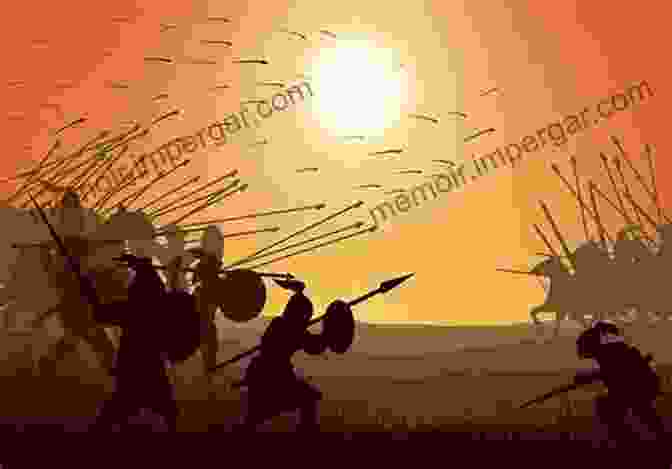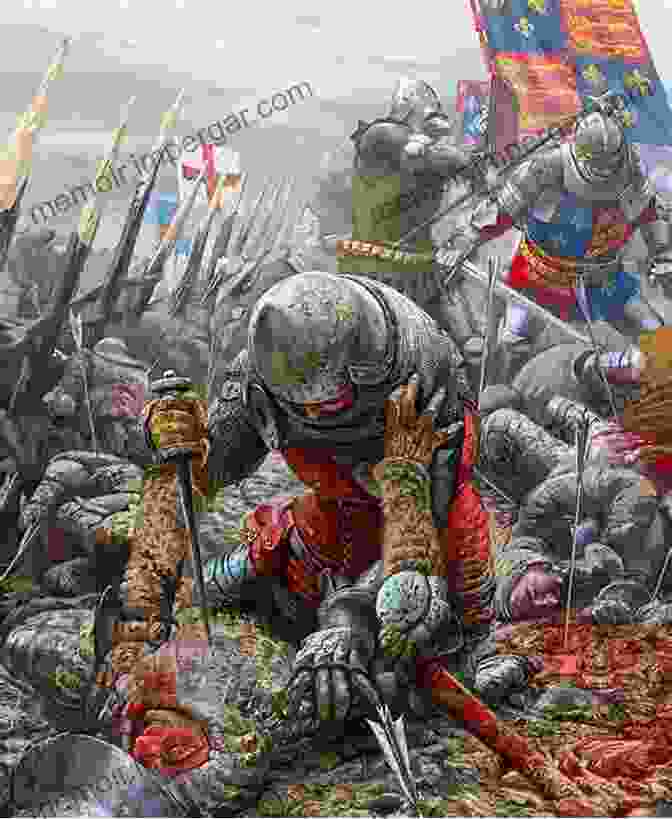Emergent Warfare In Our Evolutionary Past: New Biological Anthropology


Warfare is a complex phenomenon that has shaped human history for millennia. Its origins have long been a subject of intense debate, with theories ranging from innate aggression to cultural factors. Recent advancements in biological anthropology, however, are providing new insights into the emergence of warfare in our evolutionary past.
This article explores the latest research in this field, examining the biological and environmental factors that may have contributed to the development of warfare. We will delve into the evidence from fossil records, archaeological findings, and genetic studies to uncover the evolutionary roots of human conflict and cooperation.
Origins of Aggression and Cooperation
Aggression and cooperation are two fundamental traits in human behavior. While aggression can lead to conflict, cooperation has been essential for our survival and success as a species. Biological anthropology suggests that both of these traits have deep evolutionary roots.
Primatologists have observed aggression and cooperation in various non-human primate species. Chimpanzees, for example, engage in territorial disputes and sometimes form alliances to attack rival groups. Bonobos, on the other hand, are known for their peaceful and cooperative nature, resolving conflicts through negotiation and reconciliation.
These observations suggest that aggression and cooperation are likely part of our evolutionary heritage. Our ancestors may have inherited these traits from their primate ancestors and adapted them to their unique social and environmental circumstances.
Emergence of Warfare

The fossil record provides evidence of warfare as early as 10,000 years ago. Mass graves containing the remains of individuals with battle wounds have been found in various parts of the world, indicating organized violence and conflict between groups.
Archaeological findings also support the existence of warfare in ancient societies. Weapons such as spears, arrows, and clubs have been discovered in archaeological sites, suggesting that humans have been developing and using tools specifically designed for combat for thousands of years.
Genetic studies have further revealed that certain genes may be associated with aggression and violence. For example, the MAOA gene has been linked to aggressive behavior in some individuals, although the exact relationship between genetics and behavior is complex and influenced by environmental factors.
Environmental Factors
In addition to biological factors, environmental conditions may have played a role in the emergence of warfare. Resource scarcity, for instance, can lead to competition and conflict between groups. As human populations grew and resources became more limited, warfare may have become a means of securing access to essential resources such as food, water, and territory.
Climate change and environmental disasters can also contribute to warfare. Sudden shifts in climate or natural disasters can disrupt social structures and increase competition for resources, leading to conflicts between groups.
The Evolution of Warfare

Over time, warfare has evolved significantly. From small-scale skirmishes between neighboring groups to large-scale wars involving multiple nations, the nature of warfare has changed dramatically.
Technological advancements have played a major role in the evolution of warfare. The development of new weapons and tactics has increased the lethality and destructiveness of conflicts. The invention of gunpowder revolutionized warfare, leading to the rise of firearms and artillery.
Social and political factors have also influenced the evolution of warfare. The rise of centralized states and empires led to the development of professional armies and increased the scale of warfare. Ideologies and religious beliefs can also motivate people to engage in conflict.
Warfare and Peace
The study of emergent warfare in our evolutionary past provides insights not only into the roots of human conflict but also into the potential for peace. By understanding the biological, environmental, and social factors that have contributed to the emergence of warfare, we can gain a better understanding of how to prevent and resolve conflicts.
Warfare is not an inevitable part of human nature. Cooperation and peaceful coexistence have also been essential to our survival and success. By promoting cooperation, empathy, and dialogue, we can work towards creating a more peaceful world.
The study of emergent warfare in our evolutionary past is a fascinating and complex field that is constantly evolving. By combining insights from various disciplines, including biological anthropology, archaeology, and history, we are gaining a deeper understanding of the origins of human conflict and the potential for peace. This knowledge can help us make informed decisions about how to build a more just and peaceful world for the future.
We hope that this article has sparked your interest in emergent warfare and its relevance to human evolution and behavior. For further reading and exploration, we recommend the following resources:
- The Origins of War: Violence in Prehistory by Lawrence H. Keeley
- War Before Civilization: The Myth of the Peaceful Savage by John Keegan
- The Human Evolutionary Biology of Violence by Donald E. Brown
Do you want to contribute by writing guest posts on this blog?
Please contact us and send us a resume of previous articles that you have written.
 Book
Book Novel
Novel Page
Page Chapter
Chapter Text
Text Story
Story Genre
Genre Reader
Reader Library
Library Paperback
Paperback E-book
E-book Magazine
Magazine Newspaper
Newspaper Paragraph
Paragraph Sentence
Sentence Bookmark
Bookmark Shelf
Shelf Glossary
Glossary Bibliography
Bibliography Foreword
Foreword Preface
Preface Synopsis
Synopsis Annotation
Annotation Footnote
Footnote Manuscript
Manuscript Scroll
Scroll Codex
Codex Tome
Tome Bestseller
Bestseller Classics
Classics Library card
Library card Narrative
Narrative Biography
Biography Autobiography
Autobiography Memoir
Memoir Reference
Reference Encyclopedia
Encyclopedia Hope Lenoir
Hope Lenoir Mark Zuehlke
Mark Zuehlke Mark Moore
Mark Moore J J Anselmi
J J Anselmi Mark Ledbury
Mark Ledbury Ananya Jahanara Kabir
Ananya Jahanara Kabir Deane Walter
Deane Walter Margaret Redfern
Margaret Redfern Ragnar J Ragnarsson
Ragnar J Ragnarsson Mark Satin
Mark Satin Fiona Beddall
Fiona Beddall Dr David Laing Dawson
Dr David Laing Dawson Charles Portis
Charles Portis Andres Perez
Andres Perez Chris Clews
Chris Clews Shahri Masters
Shahri Masters Paul Nurse
Paul Nurse Ed Harris
Ed Harris William Craft Brumfield
William Craft Brumfield Rasha
Rasha
Light bulbAdvertise smarter! Our strategic ad space ensures maximum exposure. Reserve your spot today!

 Robert FrostUnveiling New Perspectives: Developing Alternative Frameworks for Explaining...
Robert FrostUnveiling New Perspectives: Developing Alternative Frameworks for Explaining...
 Allen ParkerThe Routledge Companion to Literature and Disability: A Comprehensive Guide...
Allen ParkerThe Routledge Companion to Literature and Disability: A Comprehensive Guide... Michael ChabonFollow ·7.9k
Michael ChabonFollow ·7.9k Gary ReedFollow ·16.7k
Gary ReedFollow ·16.7k Floyd RichardsonFollow ·2.9k
Floyd RichardsonFollow ·2.9k Hugh BellFollow ·5.2k
Hugh BellFollow ·5.2k Dallas TurnerFollow ·3.2k
Dallas TurnerFollow ·3.2k Esteban CoxFollow ·16.7k
Esteban CoxFollow ·16.7k Jorge Luis BorgesFollow ·15.6k
Jorge Luis BorgesFollow ·15.6k Dean ButlerFollow ·9k
Dean ButlerFollow ·9k

 H.G. Wells
H.G. WellsVisual Diagnosis and Care of the Patient with Special...
A Comprehensive Guide for Healthcare...

 Joshua Reed
Joshua ReedPractical Guide Towards Managing Your Emotions And...
In today's...

 Will Ward
Will WardYour Eyesight Matters: The Complete Guide to Eye Exams
Your eyesight is one of your most precious...

 Fabian Mitchell
Fabian MitchellManual For Draft Age Immigrants To Canada: Your Essential...
Embark on Your Canadian Dream with Confidence ...

 Jay Simmons
Jay SimmonsThe Ultimate Guide to Reality TV: Routledge Television...
Reality TV has...

 Nick Turner
Nick TurnerAn Idea To Go On Red Planet: Embarking on an...
Journey to the...








